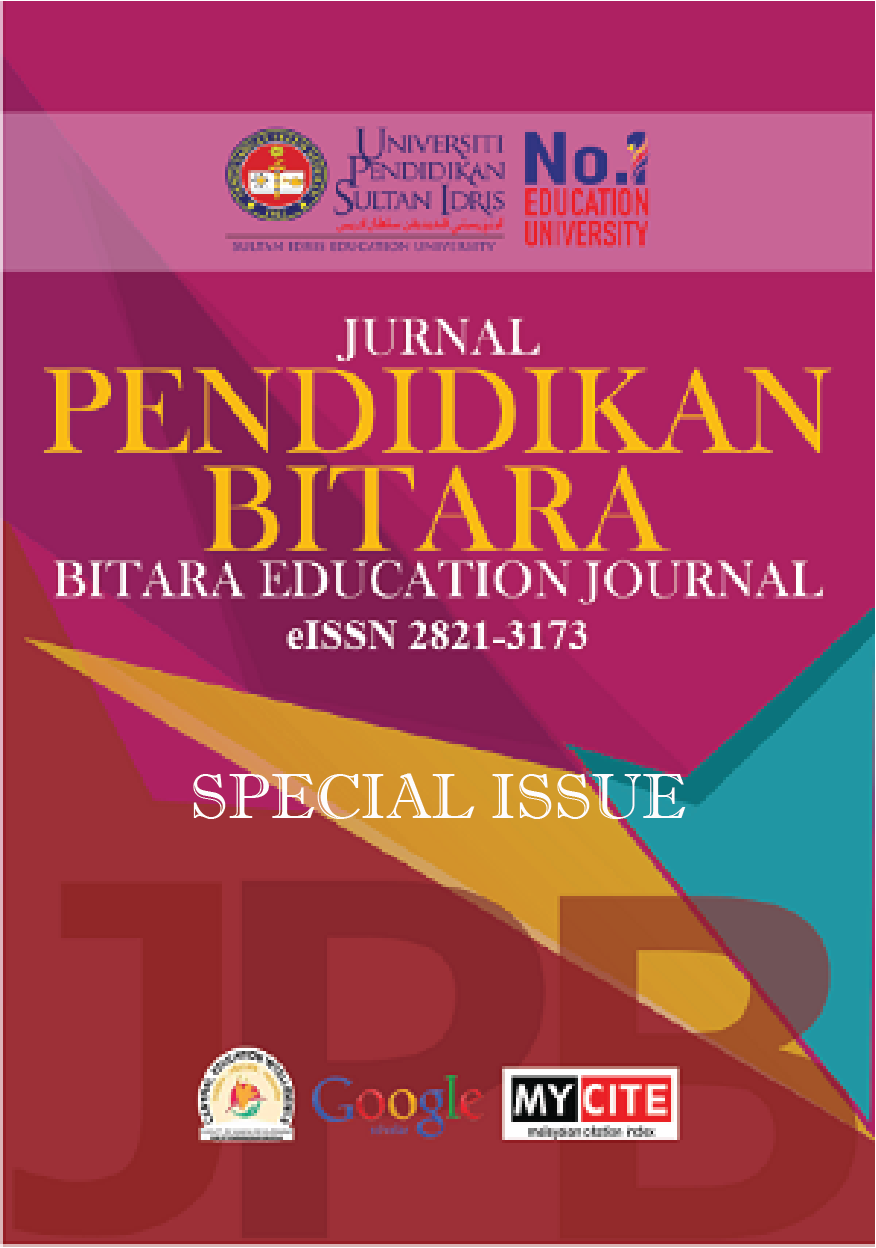Application of Virtual Reality Towards Social Skills Learning Among Children with Autism Spectrum Disorder in Malaysian Inclusive Preschool Classrooms
DOI:
https://doi.org/10.37134/bitara.vol14.sp2.6.2021Keywords:
Virtual Reality, Social Skills Learning, Autism Spectrum Disorder, Inclusive preschool classroomsAbstract
In Malaysian inclusive preschool classrooms, the learning of all academic subjects among Students with Special Needs (SSN) are based on the national curriculum like other mainstream students in inclusive preschool classrooms. As according to the framework of Kurikulum Standard Prasekolah Kebangsaan (KSPK), social skills is a crucial element to be learnt in one key domain of the six pillars, self-appearance. However, children with Autism Spectrum Disorder (ASD) are having a complex developmental condition which involve challenges in social skills. Children with ASD take longer than other typical children to learn social skills. Fortunately, technology has grown exponentially towards providing learning tools among children with ASD such as the use of Virtual Reality (VR). VR offers a computer-generated simulation that allows its users to experience and interact with a virtually structured environment. VR has provided many opportunities for children with ASD to build social skills through the designed Virtual Environments (VEs) with the representation of people or Virtual Agents (VAs) and objects. It enables children with ASD to have control over the learning process and feel more comfortable to interact with VAs as compared to a face-to-face real communication scenario. In short, this paper will be discussing on the application of VR in assisting children with ASD in their social skills learning alongside with their typical peers in inclusive preschool classrooms.
Downloads
References
Akalin, S., Demir, S., Sucuoğlu, B., Bakkaloğlu, H., & İşcen, F. (2014). The needs of inclusive preschool teachers about inclusive practices. Eurasion Journal of Educational Research, vol. 14(54), pp. 39-50.
American Psychiatric Association (APA). (2013). Diagnostic and Statistical Manual of Mental Disorders. (5th ed.) (DSM-5). Arlington, V. A.
Bamasak, O., Al-Tayari, H., Al-Harbi, S., Al-Semairi, G., & Abu-Hnaidi, M. (2013). Improving autistic children’s social skills using virtual reality. Proceedings of the International Conference of Design, User Experience, and Usability. Las Vegas, USA, pp. 342-351.
Bellani M., Fornasari L., Chittaro L., Brambilla P. (2011). Virtual reality in autism: state of the art. Epidemiology and Psychiatric Sciences, vol. 20(3), pp. 235-238.
Bennett, J., A., & Saunders, C., P. (2019). A virtual tour of the cell: Impact of virtual reality on student learning and engagement in the stem classroom. Journal of Microbiology & Biology Education, vol. 20(2), pp. 1-3.
Jennifer A. B., & Colin P. S. (2019). A virtual tour of the cell: Impact of virtual reality on student learning and engagement in the STEM classroom. Journal of Microbiology & Biology Education, vol. 20(2), pp. 1-3.
Jurevičienė, M., Kaffemaniene, I., & Ruškus, J. (2018). Concept and structural components of social skills. Baltic Journal of Sports and Health Sciences, vol. 3(86), pp. 42-52.
Lutfi Isni Badiah. (2018). The importance of social skills for autism. Advances in Social Science, Education and Humanities Research, vol. 272, pp. 20-24.
Maooadah, S., Amany, A., Ammnah, O., Salwa, A., Snaa, S., & Ebtehal, A. (2019). Employing virtual reality techniques in environment adaptation for autistic children. Procedia Computer Science, vol. 163, pp. 338-344.
Maria Sakellariou, Panagiota Strati, & Rodokleia Anagnostopoulou. (2019). The role of social skills throughout inclusive education implementation. East African Scholar Journal of Education, Humanities and Literature, vol. 2(10), pp. 633-641.
Meghan, B. C. (August 30, 2016). 3 ways assistive technology can help students with autism. EdTech [Online]. Available: https://edtechmagazine.com/k12/article/2016/08/3-ways-technology-can-help-students-autism
Ministry of Education (MOE). (2017). Kurikulum Standard Prasekolah Kebangsaan. Bahagian Pembangunan Kurikulum: Putrajaya, Malaysian Ministry of Education.
Ousley, O, & Cermak, T. (2013). Autism spectrum disorder: Defining dimensions and subgroups. Current Developmental Disorders Reports, vol. 1(1), pp. 20-28.
Papanastasiou, G., Drigas, A., Skianis, C., Lytras, M., & Papanastasiou, E. (2019). Virtual and augmented reality effects on K-12, higher and tertiary education students’ twenty-first century skills. Virtual Reality, vol. 23(4), pp. 425-436.
Parsons, S., & Cobb, S. (2011). State-of-the-art of virtual reality technologies for children on the autism spectrum. European Journal of Special Needs Education, vol. 26(3), pp. 355-366.
Ramachandiran, C. R., Jomhari, N., Thiyagaraja, S., & Maria, M. (2015). Virtual reality based behavioral learning for autistic children. Electronic Journal of E-Learning, vol. 13(5), pp. 357-365.
Schreiber, C. (2011). Social Skills Interventions for Children with High-Functioning Autism Spectrum Disorders. Journal of Positive Behavior Interventions, vol. 13(1), pp. 49–62.
Teng, K. Y. (2016). Contributions of Inclusive Education Programme, Teachers Attitudes and Efficacy on Social Skills among Students with Autism Spectrum Disorder. Doctor of Philosophy, Universiti Teknologi Malaysia, Johor.
Teng. K. Y., Yeo, K. J., & Cindy, L. C. Y. (2019). Dimensionality and factor structure for the TRIAD Social Skills Assessment (TSSA) within Malaysian Context. Atlantis Press, pp. 177-182.
United Nations Children’s Fund (UNICEF). (2017). Including children with disabilities in quality learning: what needs to be done? Inclusive Education. [Online]. Available: https://www.unicef.org/eca/sites/unicef.org.eca/files/IE_summary_accessible_220917_brief.pdf
United Nations Educational Scientific and Cultural Organisation (UNESCO). (2008). Inclusive education: The way of the future. International Conference On Education. [Online]. Available: http://www.ibe.unesco.org/fileadmin/user_upload/Policy_Dialogue/48th_ICE/CONFINTED_48-3_English.pdf
Vasquez, E., Nagendran, A., Welch, G. F., Marino, M. T., Hughes, D. E., Koch, A., & Delisio, L. (2015). Virtual learning environments for students with disabilities: A review and analysis of the empirical literature and two case studies. Rural Special Education Quarterly, vol. 34(3), pp. 26-32.





